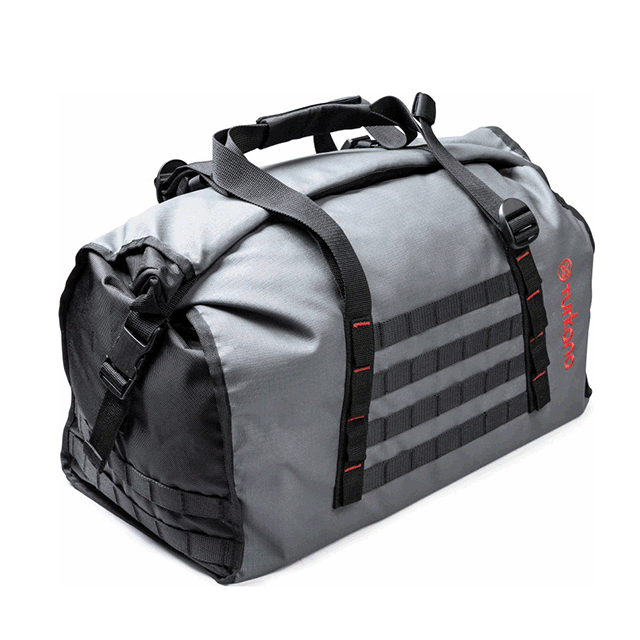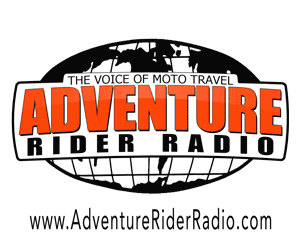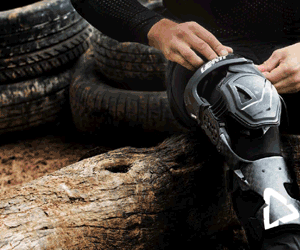“Well, it all started down here in South Africa when I got a bit of flak for my riding style. Some of the well-known instructors here would openly doubt me and criticise how I rode, but after I won at the local qualifiers, I think people began to talk. I ride with a different style to what the schools teach, sometimes even going against what they teach, and this seemed to garner a bit of attention.” – Byron Coetsee

Byron hails from the famed adventure motorcycling destination called Cape Town situated at the tip of Southern Africa. “During the day, if I’m not out riding or fixing my bikes, I’m usually writing code. I own a small app development company called Flying Mongoose. It’s two sides of the coin when it comes to my life. Extreme bikes on one side and sitting behind a computer in a dark room writing code on the other.” His passion for motorcycling started while he was still in his single digits. “I must have been five or so years old. My first introduction to an accelerator was on a tiny 50cc quad bike. From there I moved to a Yamaha PW80, and that was the first time I was on two wheels with throttle and gears. I must have been seven or eight at that stage.” And he’s been holding onto that throttle ever since.

Internationally, Byron is well-known for his role in the three-person team that won the GS Trophy in 2016. “One of the best moments I remember is when we were with team France in Thailand during the Trophy. Six bikes all about 10 ft / 3 m apart give or take, dragging footpegs on the long sweeping perfectly tarred corners of a high mountain road in the middle of a forest. We were riding on custom made Metzeler Karoo 2 knobbly tires. It was a truly memorable experience being part of that competition.” After winning the GS Trophy, BMW also invited Byron to ride their then newly launched Rallye in Iceland. “I think this and the subsequent video really had the biggest effect on me becoming well known. It was an incredible experience.”

However, Byron doesn’t only enjoy riding big adventure bikes. “I love teaching in general. I would sometimes take people out who wanted to improve their riding in some areas and get a few pointers. I wouldn’t charge for any of it. I just did it because it’s fun and I enjoy seeing others improve. Then BMW offered me the chance to attend their Instructors course in Germany. So in short, my decision to become an instructor was a progressive situation, there wasn’t a defining moment where I said ‘yeah. I want to be an instructor!’”

The Capetonian is also very candid about the influences he draws upon and that has shaped his riding and professional demeanor. “I ride with Charl Moolman, a very close friend and one of my teammates from the GS Trophy. We have this ignorant idea that ‘if the other guy can do it, well so can!’ This is almost never the case, but because of it, there’s always progression. Charl isn’t the only one, of course, everyone has a strong point, and the more you ride with people who are better than you, the better you will become. Internally, and speaking about influence on my goals and thoughts, my involvement with BMW has shaped a lot for me. Here I’ve been exposed to the political side of the game. Not from within BMW though, they’ve been amazing to me, but the politics surrounding the industry. Sometimes, when one excels and is successful, others in the same line can feel they need to dim your flame to make theirs brighter. I think they couldn’t be more wrong, but that environment has changed and continue to influence the way I professionally handle myself. Especially when it comes to riding and achieving my motorcycling related goals.”

Initially, Byron had never planned even to enter the now famed GS Trophy. “It’s a bit of a funny story actually. I finished work one day and was chatting with a friend in the parking lot. As we were standing there, we heard two guys riding around in circles and got curious. Clayton and James, whom I didn’t know at the time, were there practicing with some traffic cones. It looked way too much fun to be shy, so I just rode over and asked if I could join. After doing a few cones, Clayton suggested that I try the coming qualifiers that Saturday. I mean I had nothing to lose. So thanks to Clayton, I rocked up on the morning, and the rest, as they say, is history.” Training for the competition was, however, going to be a bit more work. “The third member in our team, John Harris, lives in another part of the country and we had never even met. Charl and I had trained a few times since we met at the qualifiers. So we got to know each other better, and we knew what skills the other person was stronger at. But it was important to ride with and get to know John too. Team tactics and dynamics are vital. Plus I’m very competitive. No one remembers who came second. So we had to be ready for anything.” That preparation paid off in the end as after seven days, and 900 mi / 1450 km of intense competition they finished first at the 2016 BMW GS Trophy held in Chiang Dao.

For the Byron, there is one key aspect to riding big adventure machines successfully. “By default, everyone rides well within their limits. Evidence of this is when you have one of those near-miss moments where you’re convinced you’re about to dirty your gloves (fall) but somehow you manage to save it. This, I believe, is because of that margin between where we think our ability lies compared to where it exists. That near-miss moment was within your ability, but outside of your perceived ability. But let me be clear, riding way too fast when you are new to riding is not a good idea. However pushing the boundaries every so often, trying out things you’ve never tried and to ride with people that are better than you, that is what will improve your skill level. Something I tell my students when they’re learning to ride sand is; ‘In order to ride sand confidently, you have to confidently ride sand.’ Even if it’s fake confidence, the effect is still the same. Confidence, I reckon it’s the key to most things in life, to be honest.”

I got my first big bike as a hand-me-down from my father when I turned eighteen. I subsequently wrote it off in an altercation with a Toyota Fortuner. With that insurance money and some help from my father, I bought the GS I’m currently on when I was twenty. I worked through my varsity career and eventually managed to pay my dad back after four years. Thus taking actual ownership of the bike. He even charged me interest!” Because his first GS was handed down to him, it wouldn’t necessarily have been Byron’s first choice. “However, my second bike was a choice and choosing the GS then was a no-brainer. After seeing what the bike could do both on tar and dirt, it was obvious. Also, keep in mind that I hadn’t ridden many other big adventure bikes at that point so my exposure to other choices at the time was limited.”

Byron’s machine is a spartan set-up. “My bike is pretty standard. I’ve got an Akrapovic pipe on, aftermarket foot-pegs which are wider, spikier and without rubber, crash bars and a Touratech cover for the throttle bodies. That’s about it. I don’t ride with a windscreen either, although that’s not particularly aftermarket. The only thing I would truly change is the suspension. I’m a big fan of the old air/oil cooled engines, but the suspension on these don’t come close to the more modern suspension. Come to think of it I’d also love a crash-bar system that is integrated with the bash-plate. Not only for extra strength but also because the tiny OEM rubbers that keep the plate attached to the engine are weak. The bolts pose a risk to the actual motor when they’re bumped from below.” Soft luggage is also Byron’s preferred method of traveling with a kit. “Falling with panniers or any metal luggage system can mean something bends and no longer fits into it’s designed bracket. Then you’re stuck. I’ve had a metal side pannier bend when I fell over in the sand once, and I had to strap it to the bike to continue because it no longer fitted the bracket. Soft luggage doesn’t bend if you fall. It maybe moves around a bit, but you straighten it, and off you go. Try strapping a metal container to your bike, not ideal.”

Byron also carries a toolkit on most of his rides. ” I’ve been lucky so far that the worst I’ve had to do is straighten the forks after they got twisted in the triple-clamps. Other than that and punctures, I haven’t gotten tested much. When I’m back at home, however, I take my bike to the guys at Donford Motorrad Cape Town. They do an amazing job with Shane Hoskins, the GS whisperer and service manager, keeping a close eye.” Navigation during rides is also a relatively analog affair. “When planning, I use a map. When navigating, a combination of GPS and maps. A GPS is necessary from a safety perspective so you can see fuel stops, closed roads, forbidden areas and all the rest. But there’s something about using a map that’s exciting… Maybe it’s the extraordinary adventure of getting lost; I don’t know.”
See more of Byron’s riding life on his Instagram account.
All images supplied by Byron Coetsee.





Leave a Reply